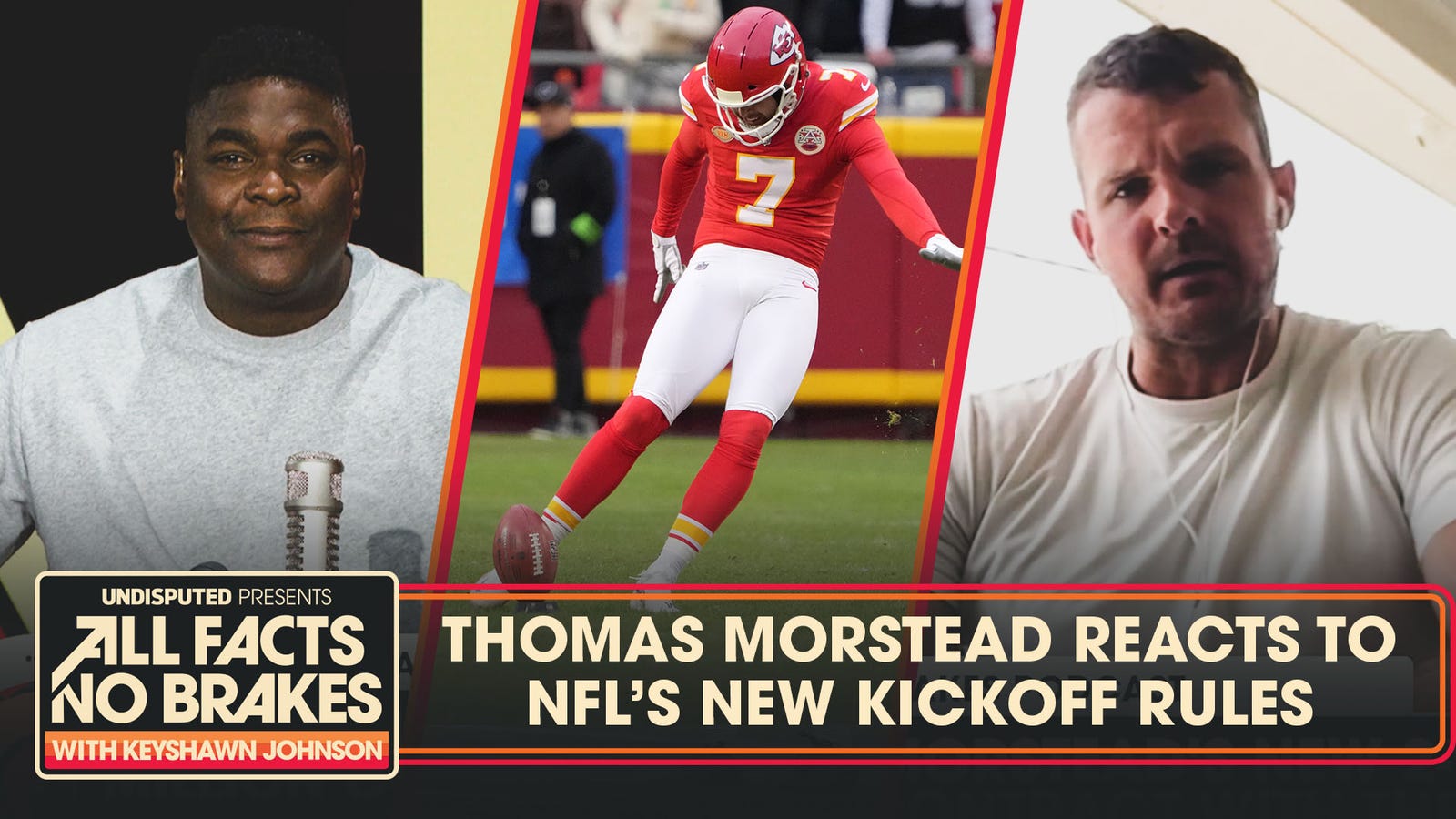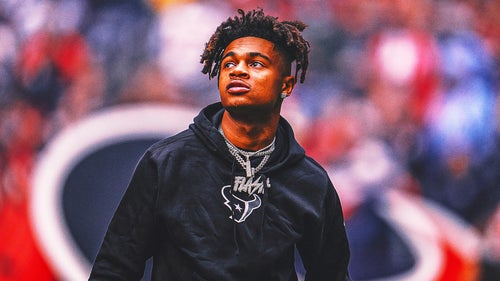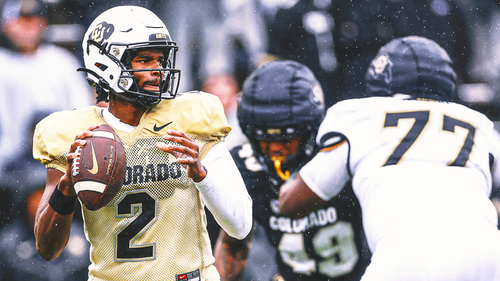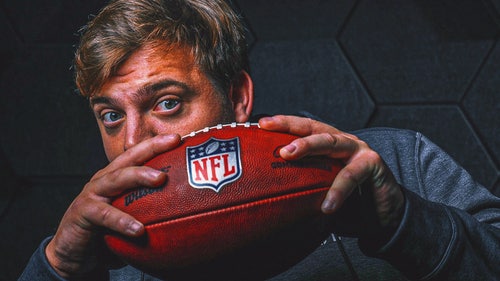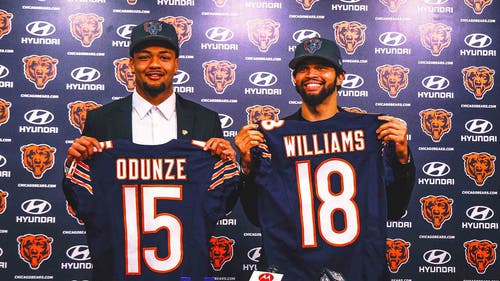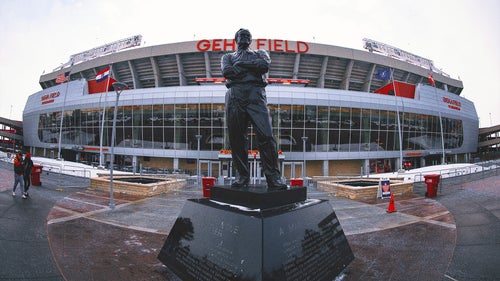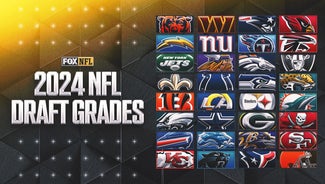
How to succeed with NFL's new kickoff format? XFL coaches share their secrets
The NFL will have a new kickoff format in 2024, designed to limit injuries but bring back the returns that had nearly disappeared from the game. The new look is modeled after what the XFL used in 2020 and 2023, so who better to explain the nuances of a new format than the coaches and players who had the most success in its brief history?
"The main thing is, it really puts an emphasis on your sudden, one-on-one battles," said former NFL tight end Anthony Becht, who worked with the format last year as head coach of the XFL's St. Louis Battlehawks, now in the new UFL. "It's fast now. It's got to be quick and urgent in your scheme. You're relying on the individual blocking of all the guys. One guy can get his butt whupped instantaneously, and if you get through that seam, then there's a problem, and that's where you get an exciting return."
The ball is still kicked off from the 35-yard line, and returners will line up much the same, but the other 20 players on the field will be much different in the new kickoff model. Instead of lining up with the kicker, the other 10 players on the kicking team will line up upfield at the opposing 40-yard line, with at least nine players from the returning team lined up between the 35 and 30. Those two groups are now in close quarters, and neither side can move until the ball is caught.

Under the new NFL kickoff rules, the two lines are set up in much closer quarters, limiting injuries but also encouraging returns with added incentives.
The new rules keep the low risk of injury, but incentivize returns. A ball kicked directly into the end zone can be brought out, but a touchback now puts the ball at the 30-yard line instead of the 25. A ball that lands between the 20 and the goal line and bounces into the end zone can be a touchback, but only to the 20-yard line, encouraging shorter kicks that are more likely to be returned.
Under the old model, the league saw its touchback rate hit 78%, so barely one in five kickoffs were returned, making the play a foregone conclusion with both sides content to start drives at the 25-yard line. That's 2,000 plays over the course of a season that were non-plays, and the hope is that they'll flip the rate to close to 80% returns, instead of touchbacks.
"Vision, patience, setting up the block are all big elements," said receiver Darrius Shepherd, last year's XFL Special Teams Player of the Year for St. Louis after leading the league with 701 yards on returns. "Those seams, they come and go really fast, so you have to be able to capitalize and hit it. I think a lot of O-line coaches might have fun giving their two cents on how to set up good creases. It'll be really cool to see the coaches go to work and see what they have to make explosive plays happen."
The kickoff-return touchdown, one of the game's most electric plays, was near extinction. There were only four in 2023, a 40-year low, and a once-a-month novelty compared to the play's peak, which saw 25 touchdowns on kickoff returns in 2007, and 23 in 2010. There were at least nine touchdowns every season from 1994 to 2012, but that's dropped steadily to last year's four scores.
The new look and a new set of rules might take a few weeks for fans — and even players and coaches — to fully understand, but the coaches who have spent time with it in the XFL say once the NFL figures it out, it will bring back a part of the game that's been missing.
"I loved it. I thought it added value to the game," said Scott Spurrier, special teams coordinator on Bob Stoops' XFL staff in Arlington and the son of coaching legend Steve Spurrier. "One thing I got from my dad, he always talked about being the first to do something, so these NFL special-teams coordinators are going to be the first, besides the XFL, to run this. If you can get a good scheme, you go down in the history of the game. How do I put something out there that's never been done? You don't have film to watch. You've got a blank canvas to design it, and that part was fun for me as a coach."
It's a different play for kickers, too. In recent years, most teams simply went with the strongest leg, kick it through the end zone and eliminate any chance of a return. Now there's a place for an accurate kicker who can drop a kick right at the goal line, bringing the lesser touchback to the 20 into play, or a return where a team can be pinned deep in its own territory.
"For like forever in the NFL, those kickoff guys, it was like going to TopGolf," said Greg McMahon, a longtime NFL and college assistant who was the Houston Roughnecks' special-teams coordinator last year. "They just brought a driver. Now you have to have a few more clubs in their bag."
There are harsh penalties all over: A kick that goes out of bounds gives the receiving team the ball at the 40-yard line, as does a kick that lands short of the "landing zone," which is the area between the 20-yard line and the goal line. That makes a low, line-drive kick harder to pull off, not to mention the presence of 20 or so players now placed between the kicker and the returner.
In two XFL seasons, there have been just three kickoff-return touchdowns in this format. The Battlehawks got one on a reverse to Joe Powell in February 2020, and two weeks later, the Dallas Renegades got one from running back Austin Walter. Last year's XFL season yielded only one, with San Antonio's Fred Brown getting the lone touchdown.
Walter, who spent last year on injured reserve with the Raiders but will be healthy for training camp, said for a returner, the ability to field a kick on the run and know all the would-be tacklers are standing still until that moment is a source of confidence.
"You're taught as a returner to catch the ball coming forward, and the offense and defense can't move until the returner catches the ball, so as you're hitting those lanes full speed, you're literally running through arm tackles in some cases," he said. "As a running back, it's the same thing as if you're running inside zone, outside zone, power, counter, reading the blocks. You get through that line of scrimmage, you're just running to daylight."
Even in the old format, you'd hear coaches say that a kickoff return is closer to a running play and a punt return is closer to a pass play, and in the new format, running backs make the most sense for an ideal returner.
"It's only five yards of separation," said Jonathan Hayes, a longtime NFL tight end and assistant who was St. Louis' head coach in 2020. "You're treating it like a running play from the line of scrimmage. It's a fit-and-finish drill. ... I always felt like your running back was better at it anyway on kickoff returns. They're thicker, more powerful and need to be able to sustain a hit and stay in balance off a hit. That will be the key moving forward. You'll see much stouter guys back there carrying the ball."
Coaches by their nature are change-averse, liking the familiarity of what they know and have done for years. XFL coaches acknowledged an initial reluctance to the kickoff model, but some came to embrace and even like it with practice.
"When I went to the XFL, I was like, 'This is the weirdest thing I have ever seen,'" McMahon said. "It went against everything I'd been around. It was new. It was weird, but I grew to really enjoy it. I think it's a great answer, and I'm excited by what the NFL did."
Will NFL teams populate their kickoff and coverage units differently with the new rules? In theory, a team might be more likely to use a more valuable player like a starting defensive back as a gunner, knowing the player no longer has to sprint 50-plus yards on every kickoff, then immediately take the field on defense. The closer quarters make special-teams duties less taxing in terms of ground covered, and might put a premium on bigger players in the middle of the field for blocking and shedding blocks.
Special-teams coaches will number their non-kickers from one to five on each side, with fives in the middle and ones on the outside, generally getting smaller and faster as you get closer to the sideline. The two fives could be outside linebackers or even a quicker defensive lineman, moving to linebackers at four and three and generally defensive backs or receivers at two and one. Coaches want sure tacklers on a coverage unit, but they also need a dose of speed to catch a returner if he makes it through the initial line of coverage.
"After he gets through the middle, with the good tacklers, if that were to happen, those guys aren't going to catch the returner," Becht said. "Now you need the speed, so maybe you go three speed guys on the outside on each side and four sure tacklers in the middle."
The NFL's old model had significantly lowered the risk of major injuries due to high-speed collisions, but in doing so had essentially removed the kickoff return from the game. Players who have seen the new format liked the relative safety it brought and relished the chance to bring game-changing plays back to special teams again.
"It was the safest thing, but just to keep the game alive and that part of special teams, I thought this was the best of both worlds," Walter said. "This is safer, but you still have the chance to create more excitement and more touchdowns. Just from experience, I looked forward to this every week, knowing my chances of taking it to the crib have increased significantly."
Greg Auman is FOX Sports' NFC South reporter, covering the Buccaneers, Falcons, Panthers and Saints. He is in his 10th season covering the Bucs and the NFL full-time, having spent time at the Tampa Bay Times and The Athletic. You can follow him on Twitter at @gregauman.






































































































































